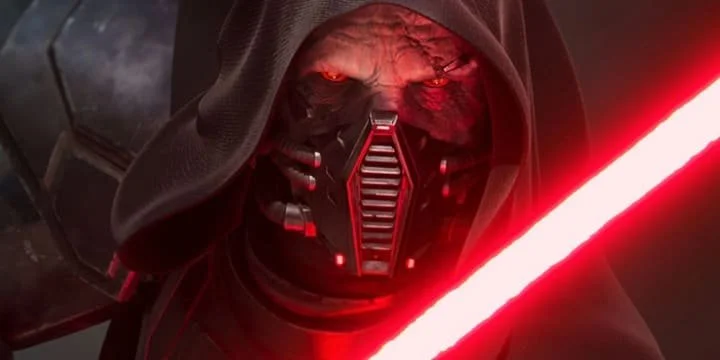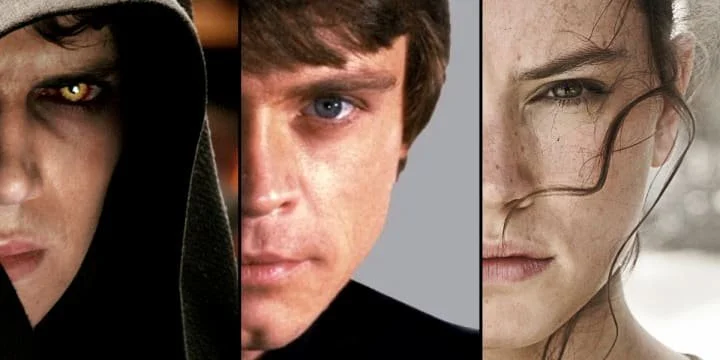Is ‘Star Wars: The Old Republic’ About To Introduce The Galaxy’s Most Powerful Weapon?
Star Wars has always been about epic concepts.
Legacy of the Sith, Bioware’s latest expansion to Star Wars: The Old Republic, introduces arguably the franchise’s most powerful weapon. Another Death Star? you might be forgiven for thinking. And why wouldn’t you? A New Hope introduced a superweapon that was hard to top: the Death Star. In early drafts of the original trilogy, the Death Star was meant to survive until Return of the Jedi. Failing that, the trilogy simply introduced another Death Star. The sequels employed the Starkiller base, which functioned similarly to the Death Star, although in some ways it was far more powerful as it could destroy multiple targets simultaneously. The prequel trilogy lacked a super-weapon, but The Phantom Menace did have a “control ship” that operated the droid army. This gave Anakin something to destroy, which made him the hero of the visceral story.
The Legacy of the Sith trailer began with Jedi Master Denolm Orr testing the Force potential of a Twi-lek child, Sa’har Kateen. She levitated a toy while her (slightly older) brother, Ri’kan, watched in awe. Orr took Sa’har, telling her he knows it is difficult, but the Force had chosen her.
RELATED: Darth Malgus' Newest Plan Teased In 'Star Wars: The Old Republic' Expansion Trailer
The trailer itself jumped to the present day, where Orr and an adult Sa’har battled an armored Sith in an old temple. In the background, a huge machine with a series of rotating rings in an energy shield whirred. Orr tossed the Sith into a wall and ordered Sa’har to destroy the machine and all records of it.
The Sith rose, but a red lightsaber pierced him from behind. Darth Malgus.
As Sa’har neared the center of the machine, she had a memory of Orr seemingly dismissing her brother Ri’kan because he showed “little connection” to the Force. She saw that Ri’kan did have some control in levitating the same toy. “Little connection” did not mean "no connection." Later, Ri’kan was enslaved.
The voice of Malgus told her that for years, the Jedi and Sith had been choosing people to learn the ways of the Force, and discarding others. This machine had cataloged all those discards.
Orr pulled apart the machine with the Force, destroying it. Sa’har took the holocron that the machine’s information is downloaded into. She then challenged Orr. Did the Force choose her, or did he? Malgus trapped and killed the distracted Orr. Enraged, Sa’har battled Malgus, but he bested her and took the holocron. The Sith said that she had been in a cage of the Jedi’s and the Sith’s ideology, but when she was ready to break free, she should find him.
This is a fascinating aside in the Jedi mythology. The Jedi never went back to free Anakin’s mother, Shmi, because they did not want personal attachments. Some younglings would surely harbor resentment at being separated, especially if their family members endured ill-fortune, just as Shmi did. This seemed to be the case with Ri’kan millennia ago in the Old Republic era. Was this not a vulnerability in the Jedi methodology? Weren't they creating potential emotional mines for the dark side to tap into?
It is a potentially fascinating commentary on how the Jedi and Sith function, and whether the galaxy far, far away is caught in the same battle over and over due to inflexible ideologies. Rian Johnson clumsily hinted at this in The Last Jedi when DJ (Benico Del Toro) told Rose and Fin just after he betrayed them, “They blow you up today, you can blow them up tomorrow. It's just business.” This battle between good and bad is cyclical. The players may change, but the battle does not.
In Revenge of the Sith, Obi-Wan Kenobi told Anakin that only the Sith think in absolutes, but it would appear the Jedi have a similar failing in regards to how they viewed the galaxy. You can only speculate how Anakin might have turned out had the Jedi freed Shmi and she lived a long, happy life, or what might have happened had they supported Qui-Gon Jinn’s decision to train Anakin. However, this never entered the Jedi’s rigid calculations. They were intractable.
In A New Hope, when the fleet brass agitated to use the Death Star, thinking it the ultimate weapon in the galaxy, Darth Vader chastised them, “Don’t be too proud of this technological terror you’ve constructed. The ability to destroy a planet is insignificant next to the power of the Force.” And he is right. Each trilogy is about somebody strong in the Force. They remain the focus through each of their three movies. The armies, ships, and super-weapons are just pawns on a chessboard used for posturing and wholly expendable. The choices that Force user (specifically in relation to how they use the Force) makes determine the outcome of each trilogy.
The machine in Legacy of the Sith had a record of all these discarded Force users, people like Ri’kan, whose sister was taken from him, and whose own future became unhappy and murky. What else could be more powerful than an army of disenfranchised and bitter people capable of the Force, angry at the galaxy that had spurned them, and who were now entreated by an anarchic Sith master?
READ NEXT: Why 'Ahsoka' Series Will Be The Perfect Project To Bring Back This 'Clone Wars' Villain
Source(s): CBR


